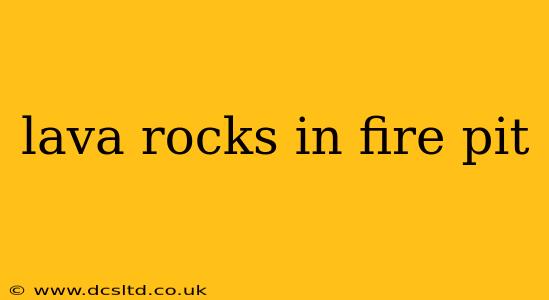Lava rocks, with their rugged beauty and heat-resistant properties, are a popular choice for fire pit fillers. But are they the right choice for your fire pit? This comprehensive guide explores the pros, cons, and everything you need to know before using lava rocks in your outdoor fire feature.
Why Use Lava Rocks in a Fire Pit?
Lava rocks, also known as volcanic rocks, offer several advantages:
- Heat Retention: Lava rocks absorb and retain heat exceptionally well, keeping your fire pit warm long after the flames have died down. This prolonged heat is perfect for extending your enjoyment of a cozy evening by the fire.
- Aesthetic Appeal: Their dark, earthy tones and varied textures add a natural, rustic charm to any outdoor space. They complement a wide range of landscaping styles, from modern minimalist to traditional rustic.
- Durability: These rocks are incredibly durable and resistant to cracking or chipping, even with repeated exposure to high temperatures and the elements. This makes them a long-lasting and low-maintenance option.
- Availability and Cost: Lava rocks are relatively inexpensive and widely available at most home improvement stores and landscaping suppliers.
What are the Downsides of Using Lava Rocks in a Fire Pit?
While lava rocks offer many benefits, it's important to consider the drawbacks:
- Weight: Lava rocks are heavy, making them difficult to transport and maneuver, especially in larger quantities.
- Porosity: Their porous nature can trap moisture, leading to popping and cracking when exposed to intense heat. This is especially true if the rocks aren't properly dried before use.
- Cleaning: While durable, lava rocks can accumulate ash and debris over time, requiring occasional cleaning. This can be a somewhat tedious task.
- Potential for Staining: While generally resistant to staining, certain materials (like sugary substances) can leave marks on the rocks.
Are Lava Rocks Safe for Fire Pits?
Yes, lava rocks are generally safe for use in fire pits, as long as they are properly sourced and prepared. However, avoid using rocks collected from natural sources, as they may contain impurities that can release harmful fumes when heated. Always purchase lava rocks specifically designed for fire pits from reputable suppliers.
How Do I Prepare Lava Rocks for a Fire Pit?
Before using your lava rocks, thoroughly wash and dry them. This helps remove any dust, debris, or impurities that could cause popping or staining. Allow them to dry completely in the sun before placing them in your fire pit.
What are Some Alternatives to Lava Rocks?
Several alternatives to lava rocks exist for fire pit fillers, each with its own advantages and disadvantages:
- Glass Fire Rocks: These offer vibrant colors and excellent heat resistance but can be more expensive than lava rocks.
- River Rocks: These are readily available and aesthetically pleasing, but they may not retain heat as effectively.
- Ceramic Fire Logs: These offer a clean, modern look and are easy to clean, but they don't provide the same rustic charm as lava rocks.
How Often Should I Replace Lava Rocks in My Fire Pit?
With proper care, lava rocks can last for many years. However, regular inspection is recommended. Replace any rocks that show significant cracking or damage to maintain safety and aesthetics.
Can I Use Lava Rocks from My Yard in My Fire Pit?
No. Rocks collected from your yard might contain hidden impurities or moisture that could cause cracking, chipping, or release harmful gases when exposed to fire. Always use commercially sourced fire pit rocks.
This guide provides a comprehensive overview of using lava rocks in fire pits. Remember to prioritize safety and choose high-quality materials for a long-lasting and enjoyable fire pit experience. By understanding both the pros and cons, you can make an informed decision about whether lava rocks are the right choice for your outdoor oasis.
